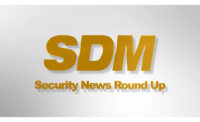The Electronic Security Association (ESA) presented a virtual town hall recently during which Michael Barnes presented an alarm industry update that, for the most part, signaled a rising tide, post pandemic.
Barnes, a founding partner of Barnes Associates and the annual Barnes-Buchanan Conference, said at the outset the industry first emerged from COVID-19 chaos growing at roughly a 5 percent compounded rate and now is trending upward from there. Contrast that with the approximately 6 to 7 percent rate the industry was experiencing prior to the coronavirus hitting these shores.
“It looks like we’ve probably recovered all the way back to those higher levels of growth. We only have preliminary data for 2023, but we anticipate monitoring and service revenues to be up by 6 percent for the year,” he said. “Sales and installation up by 7 percent, then the combined rounding to 7 percent.”
There are segments of the industry that are growing much faster than others. For example, large commercial systems continue to boom at around 10 percent growth rate. All things video surveillance, and in particular remote monitoring, is growing at a healthy 14 percent. Smart home systems are indicating as high as 15 percent, while the PERS and DIY segments are also doing “very, very well,” Barnes said.
“The largest segment is the traditional residential and SMB market, which in 2022 grew at about 3 percent,” Barnes said. “We think in 2023 that segment is going to come in at a very strong 4 to 5 percent, which bodes well for the industry as a whole.”
It's Not All Sunshine and Roses
Despite the strength and resiliency the industry continues to demonstrate, Barnes’ presentation on Nov. 14 wasn’t all sunshine and roses. National players currently hold a combined 43 percent share of all recurring revenue in the industry. A 10-year view of the market shows a declining percentage of share for regional and local companies. The slide can be expected to continue. When PERS and DIY players are factored in with national providers, the percentage of share spikes to 60 percent. About 10 years ago, national companies, along PERS and DIY players, held roughly 48 percent of market share.
“So this is very definitely an indication of industry consolidation. We think it’s being driven by the fact that smaller players are finding the industry to be more complex, difficult to keep up with,” Barnes said. “We’re finding that labor issues and supply chain issues, cost of capital issues and things like that tend to favor the larger players.”
Barnes was quick to express that these gathering headwinds for regional and local companies doesn’t mean they can’t compete in today’s marketplace — they most certainly can. Plenty of them remain some of the best performers in the industry.
“It just has to do with the fact that it is much more complicated now. And you have to make a much bigger investment in the industry,” he said.
Big Surprises in 2023
Among big surprises in 2023, Barnes said if you asked most industry stakeholders a year or two ago coming out of COVID, “I don’t think any of us would have guessed that we’d be looking at back up to record or consistent growth levels for the overall industry.”
Especially surprising, he said, are two of three key performance metrics for security companies that are improving. The first, and most important, is the cost to originate new customers. That metric had been climbing consistently for years due to a highly competitive market, with lots of discounting, increasing labor costs and more that was tough to offset.
“That has improved now. In 2022, it did. And again, we’re getting strong indications that 2023 will have improved as well,” Barnes said.
The other positive revelation: attrition rates. “This is the one that scares everybody the most. And surprisingly, we see through at least the second or third quarter of this year, for average companies it is improving. That’s a very strong indication of overall performance for the industry.”
And that third, outlier metric? Woe is the declining margin on recurring revenue. Again.
“This is consistent with a trend we’ve seen for a number of years. It’s a little bit of a cautionary note because most people expect as the industry gets bigger, it gets more sophisticated, it consolidates up a little bit, that we would see improvement in overall margins, but we’re not,” Barnes said.
He explained it seems the biggest contributor to margin decline is the fact that companies are adding additional services on top of core monitoring that are coming in at lower margins. And it’s not necessarily a bad thing.
“It’s not like the margins on basic monitoring or field maintenance are declining. It has to do more with the fact that the new growth is coming in with lower margins,” he said.
Barnes explained the highest level performance indicator that he looks at is annual steady state cash flow per dollar of RMR. He described it as being like an overall productivity or efficiency ratio.
“It basically says if you’re looking at any given dollar of average RMR in the industry, was it cheaper to originate? Is the margin higher or the attrition rate lower or the interplay of those three variables? How does it affect the math on that? We’re basically indicating that in 2023, we’re likely to see that metric move up. That’s the preliminary indication, which means the industry is healthy,” he said.
So, what’s it all mean?
“On average, most of you are doing better than you were the year before,” Barnes said. “And that’s certainly good news.”





